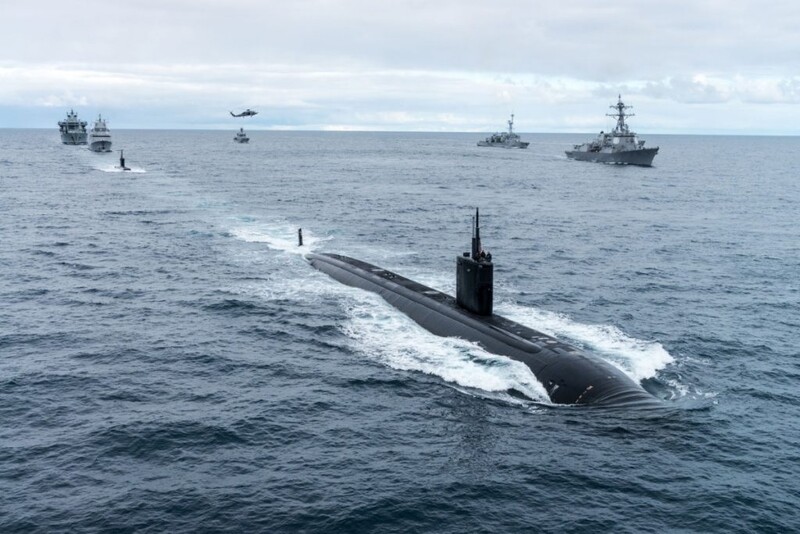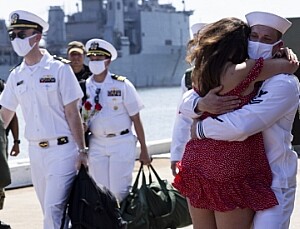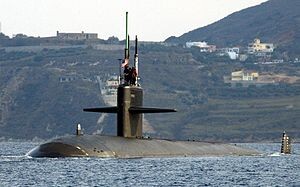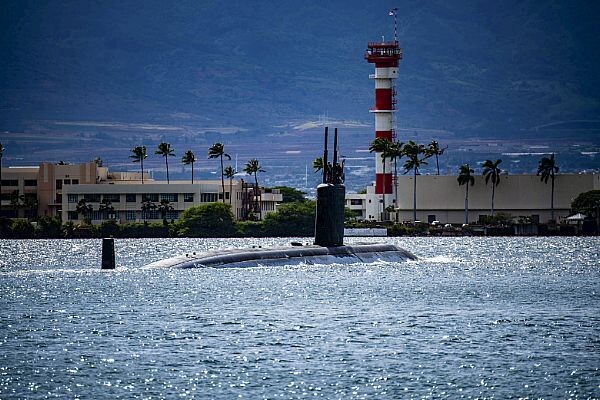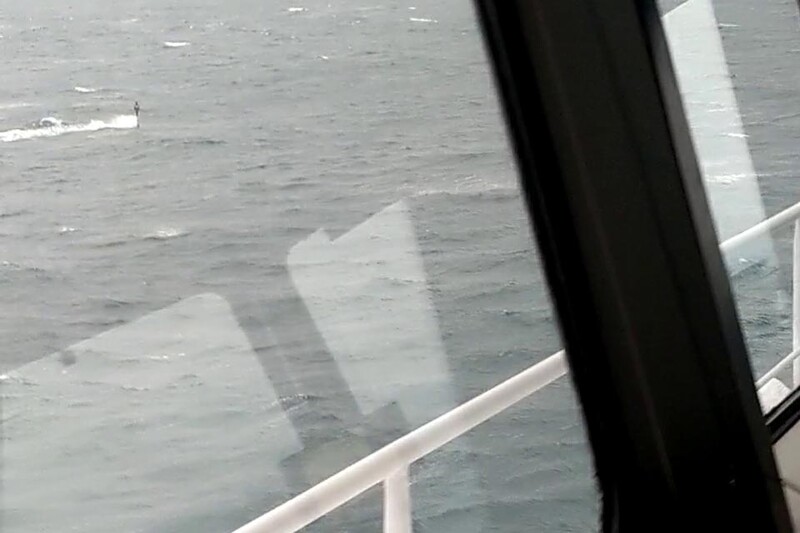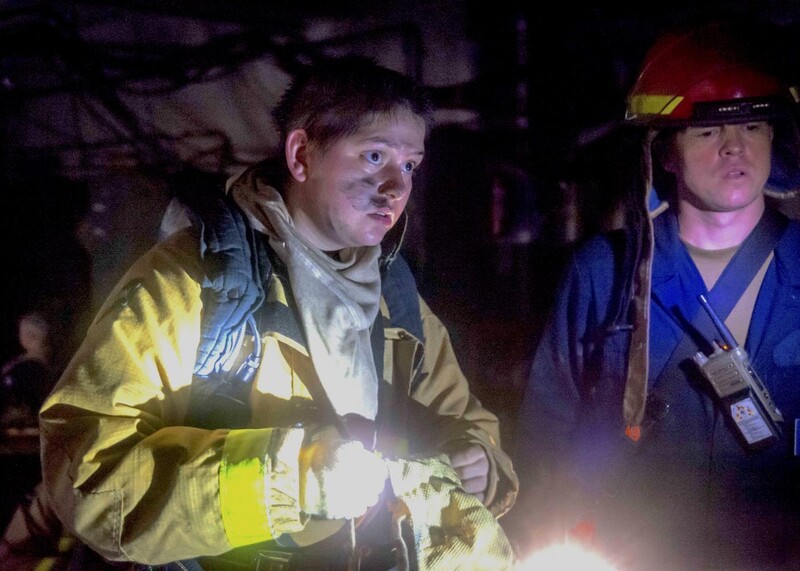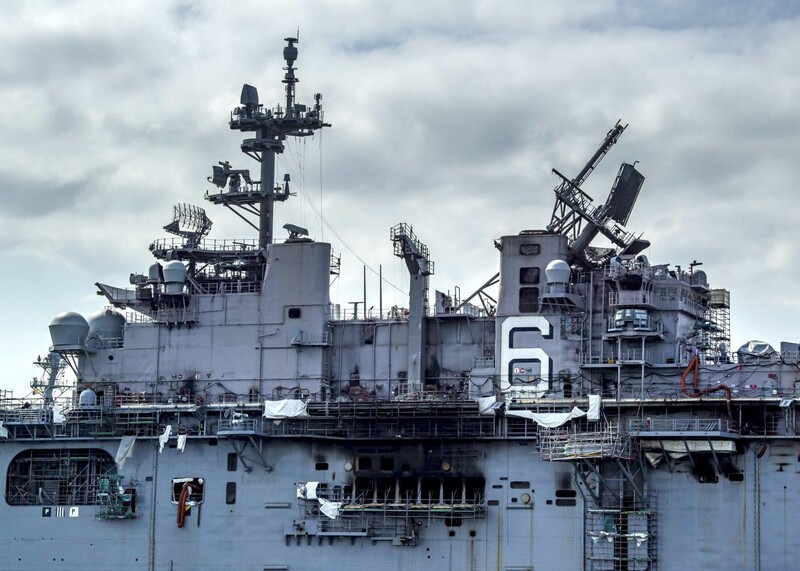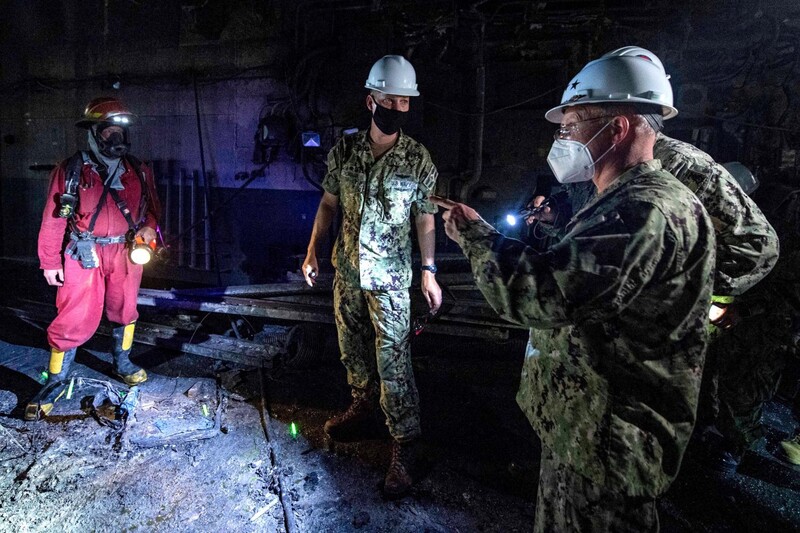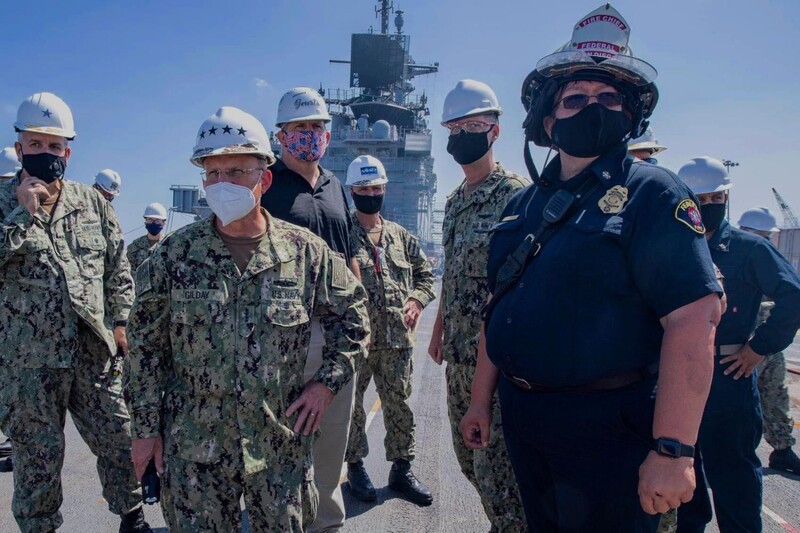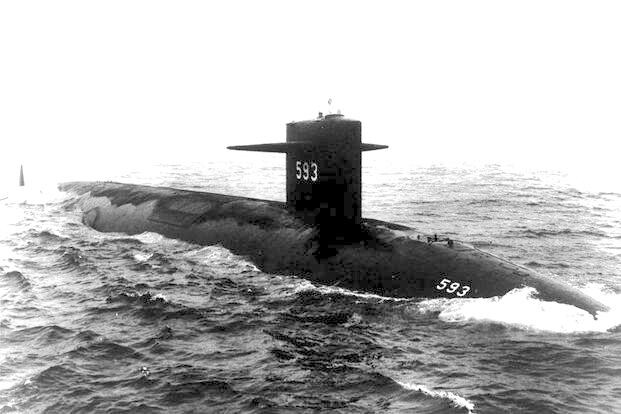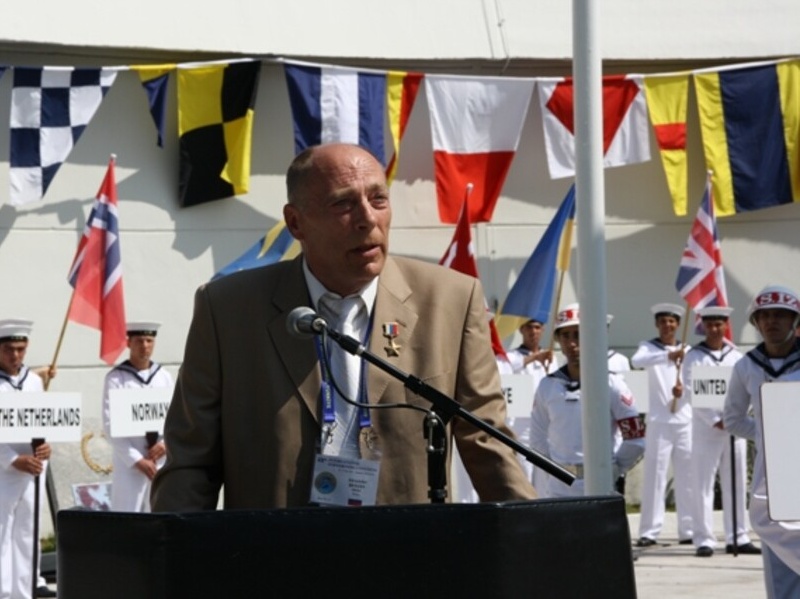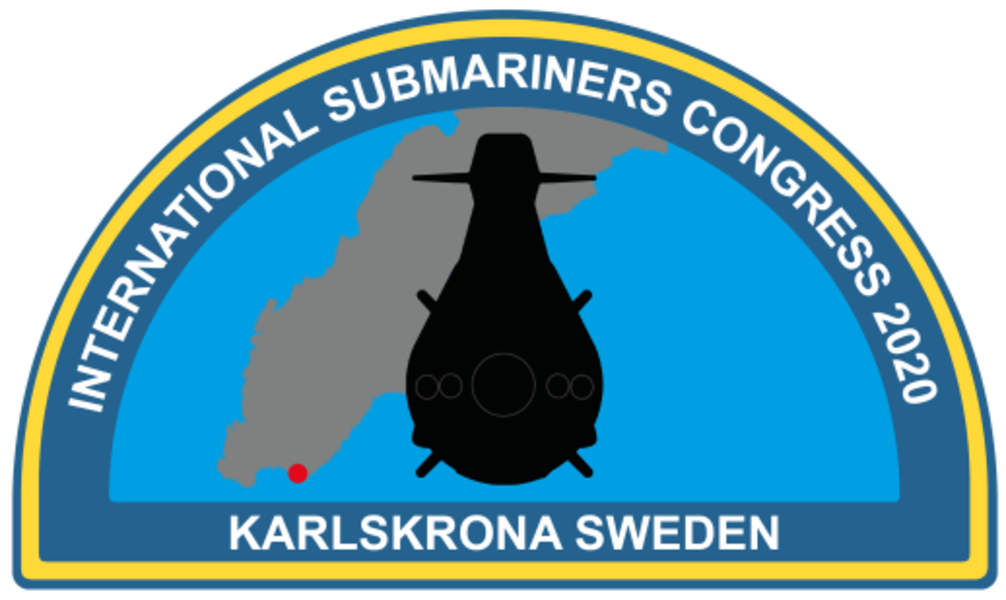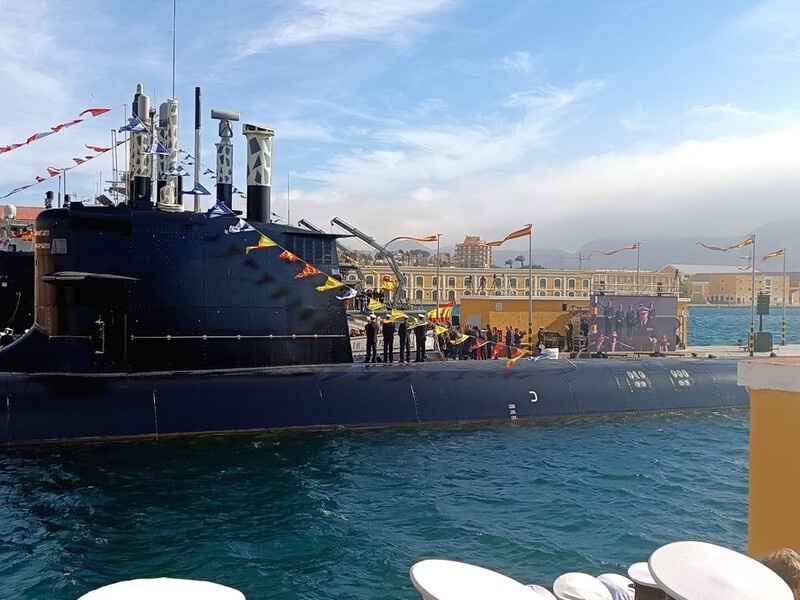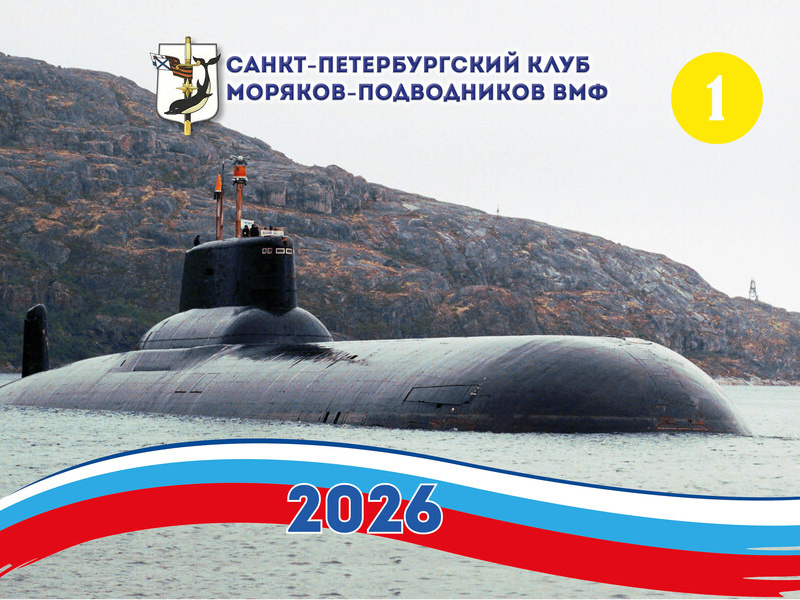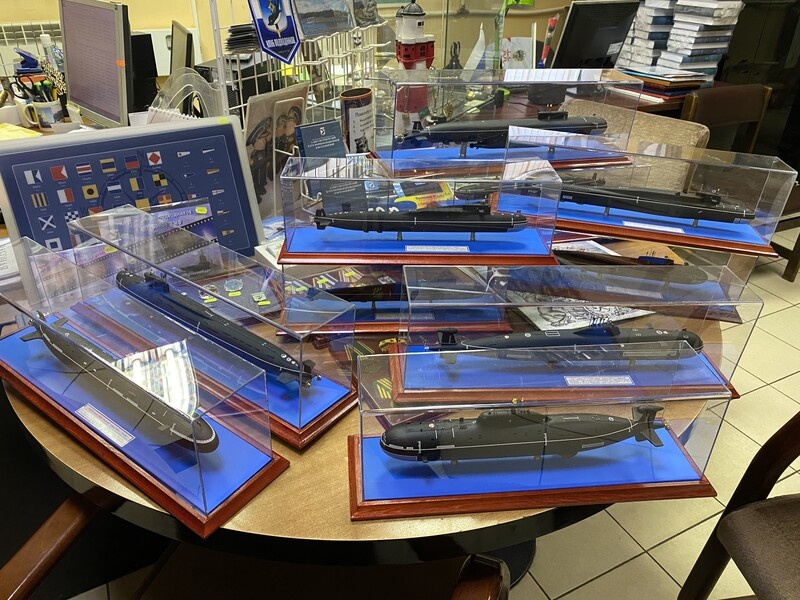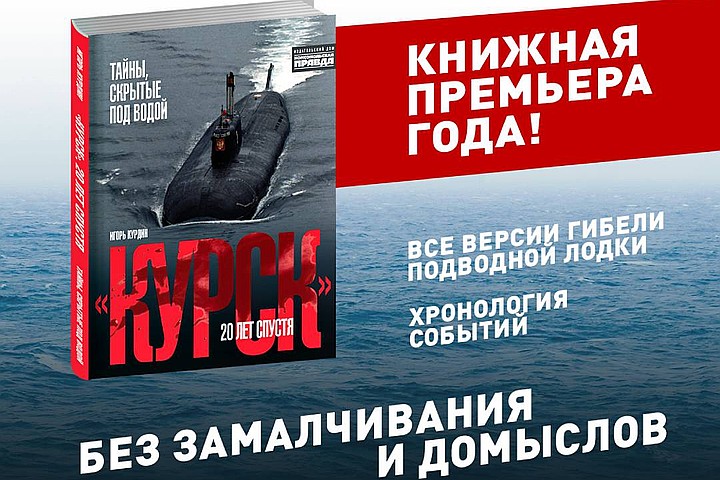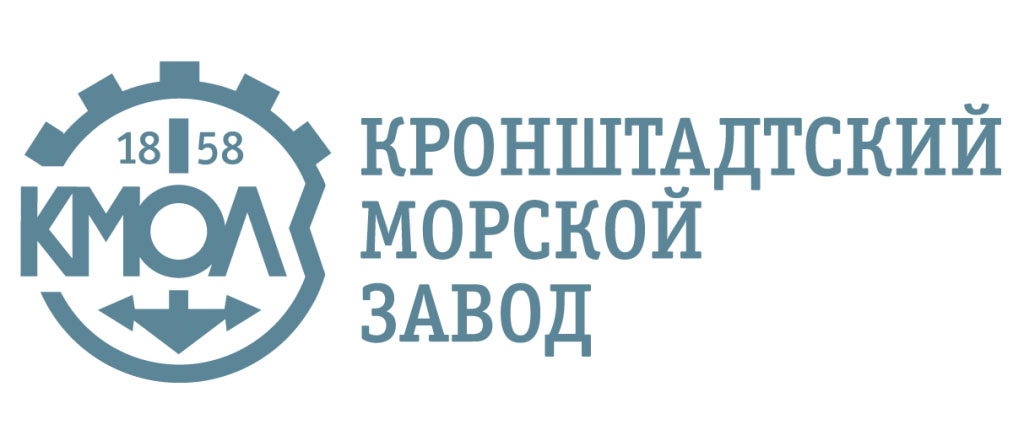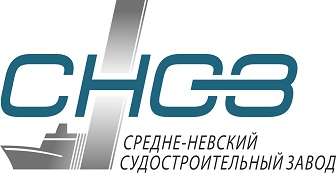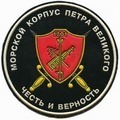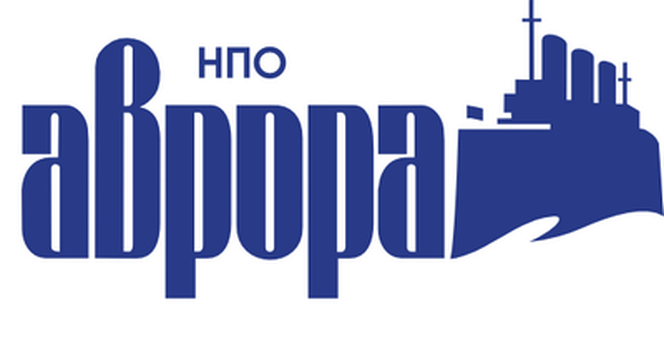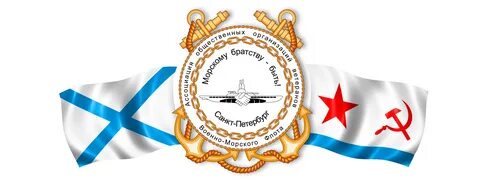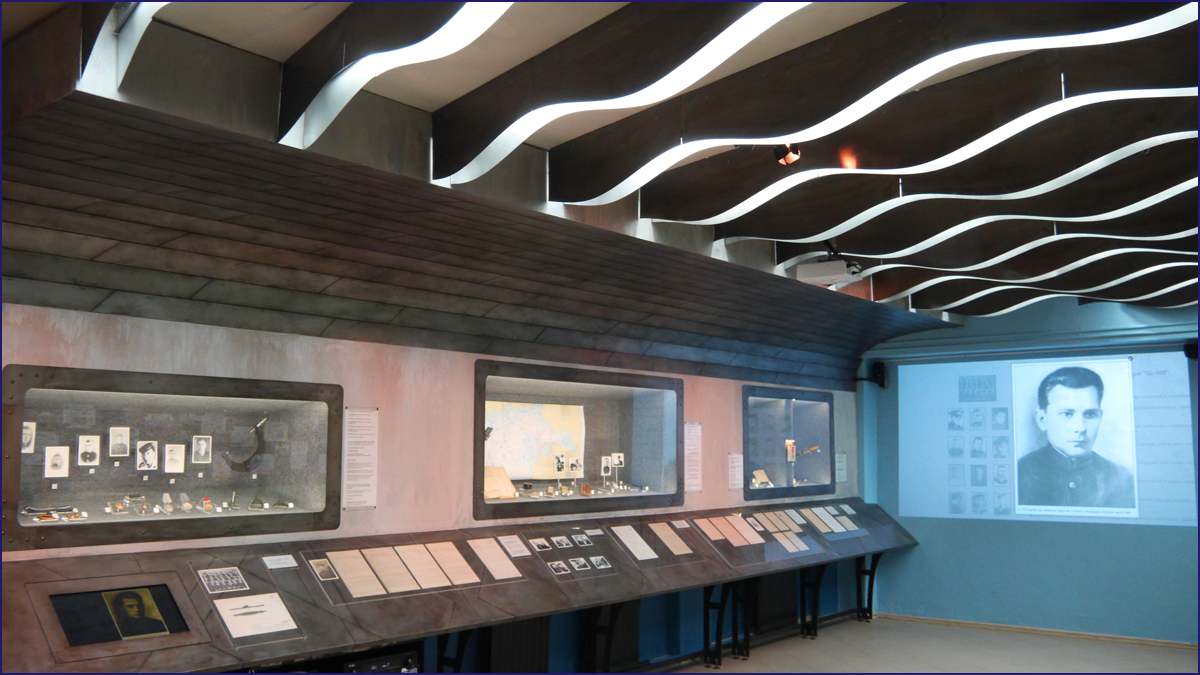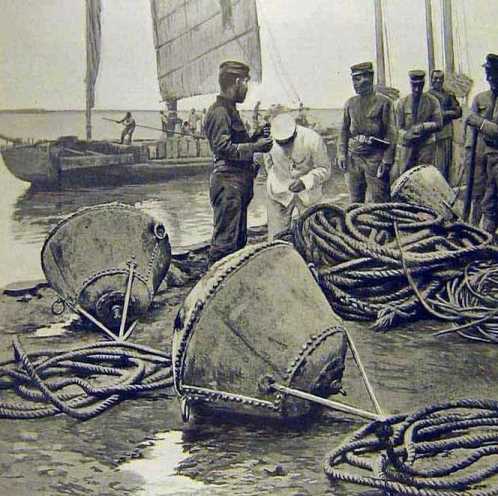Registration is now open on the website above for the 2021Sweden Congress
Join 31 Other Nation's Submariners for fun and travel; once this virus is gone.
Consider becoming a member of the ISA-USA; you will benefit in many ways.
- Be part of a 50-year tradition of international friendships of submarine sailors. Check out www.submariners.org for the history of the International Association
- Travel to foreign countries to participate in conventions that usually include thirty-one states in attendance.
- Establish friendships with submariners from other nations.
- Contribute your Submarine history and experience in our World Wide e-mail blast.
- We Cheerfully accept members that have not served but are interested in worldwide submarine activities
Lifetime membership only $50.00.
ISA/USA Membership Application. All new members of ISA/USA receive a Membership card, ISA/USA Patch, and new larger Vest Pin. On our weblink below and print an application:
Send completed form and membership fee to:
John Bud Cunnally E.T.C. (SS) Ret. USN – President
International Submariners Association of the USA (ISA/USA)
4704 Coppola Drive
Mount Dora, Fl 32757-8069
The ISA/USA Board of Directors (BOD) announces the unhappy news that our member Timothy Moore has received his last set of orders and reported to the Eternal Patrol. Tim is a past member of the ISA/USA BOD and served with distinction for several years. Recently this tireless sailor has been fully engaged in building and funding the Arizona Silent Service Memorial in Phoenix, Arizona. Fate interveined as the groundbreaking for the Memorial takes place next week, and sadly the man responsible for all of this will miss it.
Tim had the distinction of serving on one of the nation's premier nuclear submarines, the USS Seawolf (SSN 575), as a Second Class Radioman. Please consider a donation to this worthy cause in Tim’s name. See below for information.
For the BOD’s
John “Bud’ Cunnally, President
Timothy Fredrickson, Vice President
Ouida Ashmeade Cunnally, Secretary
John “Jack’ Messersmith, Past President
Send a Check, or Money Order made payable to the Arizona Silent Service Memorial or ASSM, and mail to the following address:
ASSM Foundation
Attn: Tim Moore’s Memory
18741 N. 92nd Dr.
Peoria, AZ 85382
Or go to their website and donate online. http://www.arizonasilentservicememorial.org/
2020 WWII KINGS BAY MEMORIAL WEEK
Keith has not put this out on Facebook or their Museum Website as yet, and they have made a decision. Keith writes: I hate to send sad news, but we are going to CANCEL the 2020 WWII KINGS BAY MEMORIAL WEEK in November. I have met with the Base CO CAPT Parks and the CMC CMDCM Propes, and also we as a USSVI SubVets Base meet last week. I also met with our Host Hotel and have had conversations with many other folks the past few days. We collectively feel this is the best course of action given what we know now, and what we don’t know come November.
The SUBASE as of right now cannot have us aboard the installation, so 6 of the main things we do each year, Sub Tours, BBQ at Triplex, Dinner at TTF, Tours of TTF, Lunch at the Galley and the Ceremony itself at the WWII Pavilion cannot be held as usual. Additionally, our Host Hotel does not want us to use the Hospitality Room due to the possible spread of COVID.
All and all, it is the right thing for us to do not to hold it this year to keep everyone safe. It breaks my heart, for one because this event each year is so vital to so many veterans, especially our WWII Vets and their families, and WWII Widows. As you know from being here so many times, I put my heart and soul into making it the best week of events as possible for our Veterans, their families, and guests. My heart is heavy, knowing that some of our WWII Vets who would come this November, may not still be with us next year as you well know. That is just a fact of life given their ages, and that is a heavy cross for me to bear.
Keith F. Post, Executive Director
St. Marys Submarine Museum
102 St. Marys Street West
Post Office Box 5640
St. Marys, GA 31558-5640
912-882-ASUB (2782)
First Round of Declassified USS Thresher Documents Expected in September
By: Sam LaGrone
22 Jul, 2020, 6:05 PM
·
USS Thresher in 1961 ahead of its commissioning. US Navy Photo
The first of a newly declassified documents from the investigation from the USS Thresher (SSN-593) disaster could be released to the public as early as September, according to a Navy status update from ongoing freedom of information lawsuit.
Following a judge’s order in February to begin releasing the material, the Navy asked for a stay in releasing 600 documents because the ongoing COVID-19 pandemic had closed the offices that would review the documents for sensitive information. On Monday, the stay is lifted, allowing the review to continue.
Retired Navy Capt. James Bryant, a former Thresher-class submarine commander, sued the Navy in 2019 for the documents related to the 1963 loss of the nuclear attack submarine that went down during a test dive with all hands.
In 18 Jul status update to the court, the Navy said it had found resources to process the documents that had been handed over from Naval Reactors starting in August.
The Navy “has identified and approved [two to three] reservists to travel and enter the necessary buildings to process the USS Thresher documents associated with Mr. Bryant’s FOIA request. These reservists have been approved for use [one to two] days per month,” reads the service’s update to the US District Court in Washington, DC.
“The Navy anticipates beginning a rolling release of records in September 2020.”
Meanwhile, the Navy is developing a plan for informing the remaining family members of the 129 sailors who died in the incident on 10 Apr, 1963, off the coast of New England. As part of the service’s response to the order to release the material.
“The Undersea Warfare Division of the Chief of Naval Operations in conjunction with Commander, Submarine Forces is developing a notification plan to ensure family members of the Thresher crew are given advance notification of the release of this historical information,” Lt. Timothy Pietrack told USNI News on Wednesday. “The Navy is committed to ensuring the maximum amount of information from the investigations into the loss of USS Thresher is released to the public while being considerate to the families and friends of the brave men who perished with these ships.”
The loss of Thresher prompted the Navy to create the SUBSAFE program, an exacting series of procedures and quality checks for components during construction to ensure that a submarine can safely make it to the surface in the event of an emergency.
Though the Navy is continuing the review and release process, it’s unclear how extensively the documents will be redacted.
The reasons for Thresher’s fatal end have remained an open question to those like Bryant, who feel that more can be learned from the disaster. His goal is to bring a higher degree of certainty to the loss.
“Even though the SUBSAFE program has already brought lifesaving changes, there may be more to be learned. It is time for the Navy to fully share all the evidence about this historic watershed naval loss,” Bryant wrote in Proceedings in 2018.
Report to Congress on Navy Large Unmanned Surface and Undersea Vehicles
29 Jul, 2020, 11:24 AM
·
The following is 28 Jul, 2020, Congressional Research Service Report, Navy Large Unmanned Surface and Undersea Vehicles: Background and Issues for Congress.
From the report
The Navy, in FY2021 and beyond, wants to develop and procure three types of large uncrewed vehicles (UVs). These large UVs are called Large Unmanned Surface Vehicles (LUSVs), Medium Unmanned Surface Vehicles (MUSVs), and Extra-Large Unmanned Undersea Vehicles (XLUUVs). The Navy is requesting $579.9 million in FY2021 research and development funding for these large UVs and their enabling technologies.
The Navy wants to acquire these large UVs as part of an effort to shift the Navy to a more distributed fleet architecture. Compared to the current fleet architecture, this more distributed architecture is to include proportionately fewer large surface combatants (i.e., cruisers and destroyers), proportionately more small surface combatants (i.e., frigates and Littoral Combat Ships), and the addition of significant numbers of large UVs.
The Navy wants to employ accelerated acquisition strategies for procuring these large UVs, to get them into service more quickly. The Navy’s desire to employ these accelerated acquisition strategies can be viewed as an expression of the urgency that the Navy attaches to fielding large UVs for meeting future military challenges from countries such as China.
The Navy envisions LUSVs as being 200 feet to 300 feet in length and having full-load displacements of 1,000 tons to 2,000 tons. The Navy wants LUSVs to be low-cost, high-endurance, reconfigurable ships based on commercial ship designs, with ample capacity for carrying various modular payloads—particularly anti-surface warfare (ASuW) and strike payloads, meaning anti-ship and land-attack missiles principally. Although referred to as UVs, LUSVs might be more accurately described as optionally or lightly manned ships, because they might sometimes have a few onboard crew members, particularly in the nearer term as the Navy works out LUSV enabling technologies and operational concepts. In marking up the Navy’s proposed FY2020 budget, some of the congressional defense committees expressed concerns over whether the Navy’s accelerated acquisition strategies provided enough time to adequately develop concepts of operations and critical technologies for these large UVs, particularly the LUSV. In response, the Navy’s FY2021 budget submission proposes to modify the acquisition strategy for the LUSV program to provide more time for developing operational concepts and critical technologies before entering into the serial production of deployable units. Under the Navy’s proposed modified LUSV acquisition strategy, the Navy is proposing to use research and development funding to acquire two additional prototypes in FY2021 and one more additional prototype in FY2022 before shifting in FY2023 to the use of procurement funding for the procurement of deployable LUSVs at annual procurement rates in FY2023-FY2025 of 2-2-3.
The Navy defines MUSVs as being 45 feet to 190 feet long, with displacements of roughly 500 tons. The Navy wants MUSVs, like LUSVs, to be low-cost, high-endurance, reconfigurable ships that can accommodate various payloads. Initial payloads for MUSVs are to be intelligence, surveillance, and reconnaissance (ISR) payloads and electronic warfare (EW) systems. The Navy is pursuing the MUSV program as a rapid prototyping effort under what is known as Section 804 acquisition authority. The first MUSV prototype was funded in FY2019, and the Navy wants to fund the second prototype in FY2023. On 13 Jul, 2020, the Navy announced that it had awarded “a $34,999,948 contract to L3 Technologies, Inc. for the development of a single Medium Unmanned Surface Vehicle (MUSV) prototype, with options to procure up to eight additional MUSVs.”
The first five XLUUVs were funded in FY2019; Boeing is building them. The Navy wants to procure additional XLUUVs at a rate of two per year starting in FY2023. The Navy’s FY2021 budget submission does not include funding for the procurement of additional XLUUVs in FY2021 or FY2022.
The Navy’s large UV programs pose several oversight issues for Congress, including issues relating to the analytical basis for the more distributed fleet architecture; the Navy’s accelerated acquisition strategies for these programs; technical, schedule, and cost risk in the programs; the proposed annual procurement rates for the programs; the industrial base implications of the programs; potential implications for miscalculation or escalation at sea; the personnel implications of the programs; and whether the Navy has accurately priced the work it is proposing to do in FY2021 on the programs.
CNO Gilday Promises ‘Thorough’ Investigation After Seeing Fire Damaged USS Bonhomme Richard
By: Gidget Fuentes
17 July, 2020, 10:41 PM
Chief of Naval Operations Adm. Mike Gilday tours USS Bonhomme Richard (LHD-6) on 17 Jul, 2020.
(From left to right) Rear Admiral Philip Sobeck, the commander of Expeditionary Strike Group 3, Gilday, Assistant Secretary of the Navy for Research, Development, and Acquisition James Geurts, NAVSEA commander Vice Adm. Bill Galinis, Bonhomme Richard commander Capt. Gregory Scott Thoroman, Federal Fire Chief Mary Anderson. US Navy Photo
NAVAL BASE SAN DIEGO, Calif. – The Navy’s top officer met with firefighters Friday morning and inspected the damaged decks and spaces inside USS Bonhomme Richard (LHD-6), six days after a devastating fire spread through the warship.
“There will be a thorough investigation that will determine the next steps in a variety of areas. Make no mistake: We will follow the facts of what happened here, we will be honest with ourselves, and we will get after it as a Navy,” Adm. Mike Gilday, the chief of naval operations, told reporters during a briefing at Naval Base San Diego.
Naval Sea Systems Command (NAVSEA) will lead the safety investigation. Naval Criminal Investigation Service (NCIS) will lead a criminal investigation, “as we always do to make sure there’s no malfeasance at the root of the fire,” he said. The third investigation is a command investigation overseen by U.S. Pacific Fleet “that will take a look at several echelons” in areas such as, “did we have the right procedures in place? Did we react correctly to the fire? Were there things we could have done differently? Were there things that we should have had in place that we didn’t have in place? What did we do right? What did we not do, right? That’ll be an important investigation as well.”
“My intention is for the investigations to be made available to the public when they are completed,” said Gilday. The CNO was joined at the briefing by Rear Adm. Philip Sobeck, the Expeditionary Strike Group 3 commander in San Diego, who led several press briefing updates this week.
At Pier 2, Bonhomme Richard sat with a visible list to port, and its forward mast collapsed over the superstructure.
“We have not seen a fire of this magnitude on a Navy ship in recent memory, at least in my career,” Gilday said.
He stopped at the nearby emergency operations center, which provided a command-and-control node for coordinating the fire and damage-control response, and then went aboard the amphibious assault ship.
“As I walked through the ship today, this morning, I went four decks below the flight deck and then went up to the flight deck,” he said. “I took a look at the superstructure. I was able to get a good sense of the extent of the damage – and the damage is extensive.
“There is electrical damage to the ship. There is structural damage to the ship and mechanical damage to the ship that we need to assess in much more detail before we make a final determination of the next steps.”
While the investigations get underway and questions swirl about the fire’s cause and breadth of damage, senior commanders already are calling on the fleet to ensure procedures and practices are in place to prevent any similar incident.
That message, issued this week by U.S. Fleet Forces Command in Norfolk, Va., “directs every ship in the Navy to ensure that our equipment is ready, that our people are well-trained, and our procedures are rehearsed so we can all learn from this tragedy,” Gilday said.
More immediately, he said, the Navy already has begun an assessment “to take a look at structural, electrical, mechanical damage with experts from industry who built the ship” and with experts from the Norfolk Naval Shipyard, which designed the ship, along with NAVSEA personnel familiar with structural damage to ships in prior incidents. “They’ll be making that determination – this last assessment – on what the next steps are for whether we repair or whether we don’t,” he added.
It’s unclear yet how soon any of those decisions will be made. “I am 100-percent confident that our defense industry can put this ship back to sea,” Gilday said. “But the question is: Should we make that investment in a 22-year-old ship? And I’m not going to make any predictions until we take a look at all the facts and we follow the facts. We can make reasonable recommendations up the chain of command on the future steps, any repair efforts, future repair efforts of Bonhomme Richard.”
Gilday also said the ship’s duty section at the time of the fire is “something we are going to take a look at, so whether or not we had an adequate amount of people on board for this particular environment, given the fact that the ship was at a certain point in maintenance, and certain equipment could have been inoperable in terms of firefighting equipment. We need to go through this, catalog it all, and get an understanding of whether or not we had it right. And if not, I would quickly adjust across the fleet to make sure it doesn’t happen again.”
Sobeck acknowledged earlier in the week that the ship’s fire suppression system was off when the fire began, due to the stage of the ongoing maintenance period the ship was engaged.
The Fire Fight
Chief of Naval Operations Adm. Mike Gilday and Capt.Capt. Gregory Scott Thoroman in the interior of USS Bonhoome Richard (LHA-6). US Navy Photo
Gilday praised the firefighting teams. “People were moving to the sound of gunfire,” he said.
It’s been grueling work as those fire teams of sailors and firefighters faced some “major impediments” as they attacked the fire, especially in the early hours and days, he said.
The fire was first reported in the aft section of the ship in one of the lower vehicle decks. A big problem was the winds blowing across San Diego Bay. Prevailing winds blow from the Pacific Ocean and toward the naval station’s piers along the east side of the bay.
“This fire probably couldn’t be at the worst point on the ship, in terms of its source, that allowed it to spread up elevator shafts, as an example, and exhaust stacks, as an example, to take that fire up into the superstructure and then forward,” said Gilday. “So, I think that the wind was a significant factor.”
Another problem came from a series of explosions or blasts – one heard 13 miles away – that happened as firefighting teams worked inside the ship and added to the danger, obstacles, and debris that fueled fires. Those “caused the commanding officer, who is looking at safety first: he needed to save the ship, he needed to balance that with the safety of the firefighters,” Gilday said. “So there were times when he needed to back those firefighters off of the ship.
“At one point, the explosion was so great that it blew debris across the ship, across the pier and onto the ship that was across the way.” Arleigh Burke-class destroyers USS Fitzgerald (DDG-62) and USS Russell (DDG-59) were berthed on the other side of the pier but were moved off about five hours after the fire began.
“The situation was very tenuous,” Gilday added. “I think the commanding officer made some very sound decisions in terms of how to attack the fire very deliberately. I think again the teamwork involved in several different agencies … belies the fact that the training that we do regularly, week by week with federal fire, pays off with an incident like this.”
Maintenance Concerns
USS Bonhomme Richard (LHD-6) sits pier side at Naval Base San Diego on 16 Jul, 2020. US Navy Photo
The fire began as Bonhomme Richard was about “two-thirds” through a maintenance period that included a completed dry dock phase at the nearby General Dynamics NASSCO yard as part of a $249-million maintenance availability that began in late 2018 and originally was slated to be done in May. While at the NASSCO shipyard, the ship got updates and retrofits to support the Marine Corps’ advanced F-35B Lightning II Joint Strike Fighter.
The fire is another in a line of mishaps and incidents involving ships and vessels undergoing maintenance, which has raised questions about the risks and adherence to procedures and safety measures by both Navy and contractor personnel during those critical periods.
“That’s a good question. When we have a ship in maintenance, there are mitigation plans in place that the CO and Fed Fire take a look at for every ship, ’cause it’s a little bit different,” Gilday said, in response to a reporter’s question.
“I can’t speak in any detail to the procedures or the plans that were in place for Bonhomme Richard,” he said, “but I will tell you that plan is one that’s agreed upon together by the CO of Bonhomme Richard, who has ultimate responsibility, but also Fed Fire, who assists us with any kind of incidents on base.”
“They train to those plans and those procedures, with respect to the mitigations in place,” he said, noting “every ship is a little bit different in how it’s going to be rigged.”
With the scope of this latest fire, “you don’t want to have another one like it,” Gilday said, “so I’m not waiting for this to potentially happen again.
“Ships are a dangerous place to work. Maintenance availabilities are higher risks. So that’s why the fleet commanders have gone out… with a very detailed message to say in the next five days, I want every CO of every ship to assess the training levels of their people, to assess whether or not their equipment is adequate in terms of operability and terms of placement and terms of numbers, right. Hence, they have the right resources in place if there’s a fire,” he said.
He noted that ships are conducting fire drills and flooding drills daily. But he added that “as good as you always think that you are, you’re never as good as you think you are. So that’s the real takeaway, to force these COs to take a sharper look at how they are positioned right now in whatever unique environment that they’re in to make sure that their crews are ready to go.”
Tackling the Blaze
Aviation Boatswain’s Mate (Handling) 3rd Class Hayley Craig, from Jeffersonville, Indiana, prepares to combat a fire aboard the amphibious assault ship USS Bonhomme Richard (LHD-6) on 16 Jul, 2020. US Navy Photo
Gilday said his first concern, upon hearing about the fire Sunday, was safety. “The main question I had back in Washington was whether or not we had the right resources in place for the commander to do everything he had to do to get the fire under control,” he said. “What I didn’t realize at the time, and I realized today as I was talking to the sailors in particular – is that we did not have to make any phone calls to get people to respond to this fire. We had sailors responding in numbers that stayed on the scene for days. … We had to order many of them to go home.”
More than 400 sailors from around the waterfront joined firefighting efforts. On Friday, Gilday met with 150 ship’s crew and firefighting teams that were preparing to enter the ship, and he said he was struck by their “resiliency and their fearlessness, their confidence and … their competence.”
Among those he spoke with was a third-class petty officer getting ready for her eighth fire mission aboard Bonhomme Richard, who told him how much she valued the training she had received since boot camp.
“She was very proud of what she did, and the teamwork that was involved with these small teams that were going in to fight the fire,” he said. “They were a mixture of sailors from Bonhomme Richard, sailors from other ships, fed and local firefighters in an environment where you could only see two feet in front of you, there was no lighting. It was deep heavy smoke.”
They battled high heat, too, with temperatures inside at one point reaching 1,200 degrees on Monday, he said. “We thought that we had the fire under control, had the potential to have the fire under control and put out as early as Sunday night.”
The fire, to the sailors on Bonhomme Richard, “is a gut-punch,” Gilday said. “It’s the sailors’ home. They identify with that ship, with these ball caps, they mean something,” he said. “The names of those ships mean something to those sailors.
“This is where they’re going to fight from … if they have to go to sea,” he said. “So for every one of them, it’s a personal loss,” he said, adding, “right now they are dealing with the heat of the moment in terms of making sure that the environment is safe aboard the ship so they can get aboard and start cleaning out the debris and be ready for the next steps, whatever they might be. But we’re keeping a close eye on them. We’re conscious of that fact.”
Diesel Sub Commander Recalls Historic Soviet Sub Chase
By Chief Mass Communication Specialist Dean Lohmeyer, Commander, Submarine Force Public Affairs
VIRGINIA BEACH, Va. (NNS) -- The former commanding officer of the Tench-class diesel submarine USS Grenadier (SS 525) recounted the experience of his crew 50 years ago; the events of28 May, 1959, impacted submarine warfare, especially during the Cold War era.
Capt. Ted Davis, a native of Gloversville, NY, who now makes his home in Virginia Beach, Va., was commanding officer of Grenadier that day and can still recall the events as if they happened only five years ago.
After 18 hours of tracking a contact through the icy waters of the Northern Atlantic Ocean, the captain and crew of the Grenadier would force the surfacing of a Russian Zulu-class missile-firing submarine. It marked the first time visual and photographic proof of the presence of Soviet submarines in the Atlantic was able to be captured.
Grenadier left its homeport of Key West, Fla., in April 1959, along with USS Amberjack (SS 522), USS Atule (SS 403), and USS Grampus (SS 523), to conduct special anti-submarine exercises in the Northern Atlantic Ocean. Their mission was to patrol the "GIUK gap," a chokepoint from Greenland to Iceland to the United Kingdom.
However, their unofficial goal was much different.
During Grenadier's overhaul in the Philadelphia Navy Yard, Davis learned of a proclamation from Adm. Jerauld Wright, then commander-in-chief of the Atlantic Fleet. The proclamation was more of a challenge in the form of an award to the first naval unit in the fleet that could prove the presence of a "non-US or known friendly" submarine. The first to do so would be presented an award that was undoubtedly a sign of the times - "one case of Jack Daniels Old No. 7 black label Tennessee sour mash whiskey."
When word came down that Grenadier and three other submarines would conduct operations in the Northern Atlantic after her homeport shift from New London, Conn., to Key West, Davis informed his crew of the added incentive for the deployment.
"I put out at quarters, 'Hey guys, there's a case of Jack Daniels involved,'" said Davis, who was 36-years old at the time. "It was a challenge, but I knew the odds of us running into a Russian submarine were about one in a million."
Grenadier was on station for several days when Davis received word from his messenger that a contact was nearby.
"The messenger came in and told me that sonar had a Soviet submarine," said Davis. "The first thought that came to my mind was that the crew was so good that if they said it was a Soviet submarine, it was a Soviet submarine."
Davis, however, wasn't about to take it for granted. He asked his crew how they were so sure the contact was Russian.
"They said they'd been listening to submarines for a long time, and they knew this guy didn't fit any other pattern we had," said Davis. "No American submarines, no British submarines - this was it."
Then the contact disappeared only moments after Davis had been convinced by his sonar operators the contact was Soviet.
The sonar crew estimated the course of the contact, believing the submarine was heading home to a port in the Soviet Union. Its range was about 20,000 yards and speed about five knots.
Davis, a 1947 graduate of the US Naval Academy, instructed his crew to set up two plotting teams, one in control and one in the wardroom, to plan to intercept the contact.
At the time, Grenadier's battery was strong, having charged all night, but later in the day, the air inside Grenadier became a little foul. Technology that would provide submarines the ability to clean the air inside the submarine had yet to be invented, so submarines would have to surface to vent the sub and take in clean air. Additionally, smoking cigarettes aboard the boat was common and not restricted to the engine room.
"A strong battery was more important than anything else," said Davis, allowing his crew to plot a course to intercept the Soviet sub at a speed of approximately eight knots.
"The waiting went on into the early afternoon, when all of a sudden, sonar hollers, 'Contact! Close aboard! Port-bow!'" said Davis.
"To this day, I couldn't tell you if that guy knew where we were, but we could hear him."
The Soviet sub immediately "came roaring down at us," said Davis. It reminded him of a recent incident during which a Soviet submarine fired a torpedo deep under a US submarine. The torpedo was intentionally fired deep, but the action achieved the intended effect - the US boat was forced to take evasive action. At the same time, the Soviet sub was able to sneak off in the confusion and noise from the torpedo, effectively breaking the contact.
Davis believed the actions by the Soviet sub commander this day might have the same intentions, including forcing the Grenadier to identify it's presence by going to full speed to evade the oncoming Russian sub. He also felt the Soviet commander might try to clip Grenadier's screws, stern planes, or rudder, leaving the boat helpless to continue the pursuit but not in a life-or-death situation.
Grenadier didn't back down, however, maintaining position and, most importantly, stealth.
Davis instructed two of his officers who were manning passive and active sonars to maneuver the ship using the sonars' info.
But there was one specific instruction - always turn into the contact to avoid presenting the stern to the other submarine. Davis didn't want to present his rudder or screw to the other ship because doing so would leave him vulnerable to a "bump" from the Soviet sub that could damage Grenadier's screw or rudder. Damage to either would force Grenadier to abandon the pursuit, letting the Soviet sub slip away.
"He came within 400 and 800 yards of us, which is awfully close" said Davis. "When I thought that it was about time to turn, I heard, 'Left full rudder! All ahead flank!' The officers in conn were on top of the problem. As he went down our port side, we just curved right in behind him.
"He thought he heard something behind him, but he wasn't sure, so he turned around and did it again," said Davis. "Then we did the same thing and fell right in behind him again. Then he took a course for home."
The Soviet sub was deep at a speed of five knots; Grenadier trailed 2,000 yards astern.
Davis decided to surface. Not only was the air fouled, but it was getting hard to light a cigarette, demonstrating the increasing amount of carbon dioxide in the boat.
While surfaced, he sent a message to Commander Submarine Force Atlantic Fleet: "Have contact on Soviet submarine, can track indefinitely." Davis also requested support from a P-2V anti-submarine patrol aircraft from Patrol Squadron 5 (VP-5) at Naval Air Station Keflavik, Iceland.
According to a report, Davis wrote later; he decided to then remain surfaced as long as possible, creating a more significant advantage for himself over the Soviet submarine. Topside watches were organized, and Executive Officer Lt. Cmdr. Ed Welsh took over as a plot coordinator.
"We were ready to hold contact for as long as it took to exhaust the adversary," wrote Davis in his report.
Shortly after the P-2V was vectored in, sonar reported the Soviet sub coming up, probably to take a look.
One of Davis' junior officers, Lt. Dave McClary, wanted to be a pilot when he first entered the Navy, but poor eyesight prevented further pilot training. He took this opportunity to vector the P-2V over the Soviet sub and was manning the con when the sub's periscope broke the surface. He then expertly directed the P-2V right over the Russian, performing the task to perfection.
Flares dropped from the P-2V landed in the water right beside Ivan's periscope. Davis still laughs when he thinks about it.
"I swear, that periscope came up, and the flare went 'boomp' right beside it," said Davis. "I said to myself, 'I'd like to see the look on his face, whoever was looking up through that periscope."
Several more flares were dropped over the next few hours. Davis knew without a doubt the Russian sub was aware of the plane and most likely was now fully aware they were being tracked by a submarine as well.
"I thought that was good because if he had any ideas about trying to sink us, we've got a witness in the air," said Davis.
After several hours of tracking the Soviet sub from the surface, sonar lost contact. Davis immediately brought Grenadier to all stop.
"I passed the word that if you're smoking, dump your ashes in your hand, don't let your ashes hit the deck," said Davis. "That's how quiet I wanted the boat to be."
Davis' sonar officer suggested they go active on sonar. Still, Davis felt the other sub was deep and hovering, and going active would only help him verify Grenadier's position in one last attempt to escape.
"We were both dead in the water, so we were just going to let him sit," said Davis.
At the same time, the P-2V was running out of fuel and was replaced by another P-2V out of Keflavik.
"The second guy was dropping sonar buoys all over the place," said Davis. "I needed that like a hole in the head."
By this time, it was almost midnight on28 May. And Davis knew the time was near.
"I thought, this guy was out of air; he's out of battery, he's running out of everything, and he's going to surface at the darkest part of the night," said Davis.
Davis had his sound-powered phone talker pass the word through the ship that the CO expected the submarine to surface a little after midnight. The XO laughed, saying, "There you go again!"
"I thought, what the hell, we have to do something to keep (the crew) laughing," said Davis. "But sure enough, at 15 minutes past the hour, sonar hollers, 'He's surfacing! He's surfacing!' So we vectored the airplane over the top of their deck."
The P-2V shined a light on the Soviet submarine and took dozens of photographs. Some of the photos showed Russian crewmembers trying to cover the sail area with canvas to hide two missile tubes.
"It turned out that we found the first real evidence of a missile-firing Soviet submarine, something our intelligence community was trying hard to get the dope on," said Davis. "Here, we had all the information they needed. We not only satisfied Jerauld Wright. but this was a real break for the intelligence community as well."
The Russian sub stayed on the surface for more than 24 hours, and Grenadier's crew recorded as much information as possible. Once Grenadier had gathered enough information, they were ordered back to their station to continue their participation in the exercise.
Once the exercise was over, and Grenadier returned to Key West, an awards ceremony was held, during which Wright presented a case of Jack Daniels Old No. 7 black label Tennessee sour mash whiskey to the crew.
The crew of Grenadier would have to accept that as their reward for a job well done because no unit award was presented to the boat for surfacing the Soviet Zulu, but Davis believes the crew was just as happy with the success and the Jack Daniels.
"That whiskey was gone at the next crew party," said Davis, who still has a Jack Daniels bottle from the original case. Empty, of course.
Along with the case of whiskey, Wright presented a proclamation to Davis and the crew. The proclamation stated that the presence of unidentified submarines had been reported in the sea lanes off the coast of the US, and those submarines were uncooperative in declaring their identity and intent. But ".through actions of USS Grenadier (SS-525) tangible evidence these surreptitious operations are being conducted has been produced."
Davis gives credit for the success of this mission to his crew, many of whom were exceptionally well qualified.
"They were truly a magnificent team," said Davis.
Although the significance of the incident can never be sufficiently credited to Grenadier's success, many changes in both navies followed soon after. The Navy commissioned America's first fleet ballistic missile submarine USS George Washington (SSBN 598) in December 1959, and the Russians soon scrapped their Zulu class of ballistic missile submarines.
Davis is very proud of the accomplishment, and he fondly remembers 29 May '59" any time someone asks him about it.
"We were in the right place at the right time with a great crew," said Davis.
He also remembers how some senior officers tried to put the surfacing in a different light.
"The briefing for (the chief of naval operations) with all his staff was amusing in that the surface force admirals were trying to say that it wasn't a submarine that did it because Grenadier was on the surface when the Soviet surfaced," he said. "I just smiled and concluded my remarks emphasizing that it was submariners that did the job, not the submarine itself. In short, it was submariners who got the Jerauld Wright Award, which gave the sub force a great boost."
For more news from Commander, Submarine Force, visit www.navy.mil/local/sublant/.
A near miss between a Royal Navy submarine and Stena Superfast VII ferry occurred in 2018 because the submarine’s control room team had underestimated the ferry’s speed and overestimated its range, a report issued by UK’s Marine Accident Investigation Branch (MAIB) shows.
Submarine periscope, as seen from the ferry. Photo: Stena Line
Back on 06 Nov, 2018, the ferry’s officer of the watch took urgent action to avoid a submerged submarine after its periscope had been spotted close ahead of the ferry.
Post-event analysis showed that, before the ferry’s course alteration, there had been a severe risk of collision.
Stena Superfast VII was on a scheduled North Channel crossing from Belfast to Cairnryan, and an undisclosed Royal Navy submarine was at periscope depth conducting pre-deployment safety training in the same vicinity.
The submarine’s command team detected and tracked the ferry using visual, sonar, and automatic information system data. As the ferry’s range reduced, the submarine’s officer of the watch altered course to avoid it. However, this turn was towards the ferry and reduced the time available for the submarine to keep out of the ferry’s way.
With the sonar contact on a steady bearing, the submarine’s sonar team initiated a close-quarters procedure; the commanding officer was also called to the control room. Based on the picture displayed by the submarine’s electronic tactical command system, the commanding officer intervened to cancel the close quarter's procedure and ordered that the submarine remain at periscope depth rather than go deep to its safe depth. At about the same time, Stena Superfast VII’s lookout spotted a submarine periscope close on the port bow, and alerted the officer of the watch, who took immediate action to avoid the collision. After taking avoiding action, the ferry’s closest point of approach with the submarine was about 250 yards, which was unsafe; however, the submarine’s commanding officer believed the passing distance to be about 1000 yards, or four times the actual range.
“(T)he submarine’s control room electronic tactical display presented a picture of a safer situation than reality; this meant that safety-critical decisions made onboard the submarine may have appeared rational at the time,” MAIB explained.
Two previous collisions between Royal Navy submarines and surface vessels show a similarity in those critical decisions on board the submarines were made based on an insufficient appreciation of the location of surface ships in the vicinity, MAIB added.
The Royal Navy has taken a series of actions in response to this incident and previous similar accidents. As a result, a safety recommendation has been made to the Royal Navy to undertake an independent review of its actions taken to ensure that such actions have been effective in reducing the risk of collision between dived submarines and surface vessels.
The Los Angeles-class fast-attack submarine USS Cheyenne (SSN 773) departs Joint Base Pearl Harbor-Hickam
200715-N-KB401-1075
PEARL HARBOR (15 Jul, 2020) The Los Angeles-class fast-attack submarine USS Cheyenne (SSN 773) departs Joint Base Pearl Harbor-Hickam for a scheduled Indo-Pacific deployment, where they will perform a full spectrum of operations, including anti-submarine and anti-surface warfare. Cheyenne was commissioned on 13 Sept, 1996, and was the last of the 62 Los Angeles-class fast-attack submarines to be built. (US Navy photo by Mass Communication Specialist 1st Class Michael B. Zingaro/Released)
USS Newport News Returns from Deployment
Story Number: NNS200720-03Release Date: 7/20/2020 8:43:00 AM
NORFOLK, Va. (NNS) -- The Los Angeles-class attack submarine USS Newport News (SSN 750) returned to its homeport at Naval Station Norfolk from deployment, July 18.
Under the command of Cmdr. Dave Fassel, Newport News returns from a deployment where it executed the chief of naval operations' maritime strategy by supporting national security interests and maritime security operations.
Newport News reached an incredible milestone of 1,000 dives and spent 137 continuous days underway, both a testament to the quality and dedication of shipbuilders, maintenance professionals, and submarine crews.
“The level of dedication, teamwork, resiliency and heart this crew demonstrated during an extended seven-month deployment is just amazing,” Fassel said. “The fact that we were able to spend 137 continuous days at sea while managing our equipment status and food inventory is a true testament to the mental toughness and sacrifice every Sailor exhibited to ensure Newport News was on station when the country called upon her.”
As the Coronavirus disease (COVID-19) pandemic spread across the globe, Newport News continued to conduct operations.
Machinist’s Mate (Nuclear) Second Class Tyler Lott recounts the crew’s efforts during an at-sea replenishment, an operation rarely conducted by attack submarines, but necessary due to COVID-19.
“My proudest moment during deployment was our resupply at sea,” said Lott. “It was an expertly coordinated and executed effort, and we got the much needed supplies to continue our mission. I was proud to play my small role in this success.”
Cheri Lott, the wife of Tyler Lott, is happy to have her husband home from his seven-month deployment.
"Deployments are always hard, but as a nurse during this pandemic it has been the most difficult we have experienced yet,” Cheri said. “Tyler and I are newlyweds, and I am so excited to have my husband home and start our lives together."
During the deployment, Newport News steamed approximately 45,000 nautical miles and conducted one port visit to Diego Garcia, with limitations that protected the crew from COVID-19 and offered them an opportunity for rest and relaxation while also providing logistical support.
“Due to the effects of COVID-19 and the need to remain a battle-ready asset, Newport News was restricted to the pier to ensure there was no risk to the crew to contract the virus,” Fassel said. “Naval Support Facility Diego Garcia and Diego Garcia Morale, Welfare and Recreation truly helped the crew get some well-deserved rest and relaxation after an arduous 137 days at sea.”
While operating in the U.S. 5th Fleet area of operations, Newport News participated in a bilateral interoperability exercise with the French ship (FS) Languedoc and an anti-submarine warfare exercise with the Dwight D. Eisenhower Carrier Strike Group.
Twenty-eight enlisted Sailors and five officers earned their submarine warfare qualification, known as "dolphins," while four officers promoted, 15 enlisted Sailors advanced to the next paygrade and 30 reenlisted.
Fast-attack submarines are multi-mission platforms enabling five of the six Navy maritime strategy core capabilities - sea control, power projection, forward presence, maritime security and deterrence. They are designed to excel in anti-submarine warfare, anti-ship warfare, strike warfare, special operations, intelligence, surveillance and reconnaissance, irregular warfare and mine warfare. Fast-attack submarines project power ashore with special operations forces and Tomahawk cruise missiles in the prevention or preparation of regional crises.
Newport News, the third ship to bear the name of the Virginia shipbuilding city, is 360 feet long, displaces 6,900 tons of water, and can travel in excess of 25 knots.
RELATED PHOTOS
Machinist™s Mate (Nuclear) Second Class Tyler Lott assigned to the Los Angeles-class attack submarine USS Newport News (SSN 750), embraces his wife Cheri Lott, at Naval Station Norfolk upon returning from deployment, July 18, 2020. Newport News returned to its homeport at Naval Station Norfolk after a seven-month deployment in support of national security interests and maritime security operations. (U.S. Navy photo by Lt. j.g Jacob Dirr/Released)
July 18, 2020
Exercise Dynamic Mongoose 2020 underway in High North
June 30, 2020, by Naida Hakirevic
Naval forces from Canada, France, Germany, Iceland, NATO, Norway, the United Kingdom, and the United States are participating in the NATO Allied Maritime Command-led (MARCOM) exercise Dynamic Mongoose 2020 in the northern Atlantic Ocean from June 29 to July 10, 2020.
Ships, submarines, as well as aircraft and personnel from six Allied nations, are converging off the coast of Iceland for anti-submarine warfare (ASW) and anti-surface warfare training.
In total, five surface ships, five submarines and five maritime patrol aircrafts are participating.
Submarines from France, Germany, Norway, United Kingdom and the United States under NATO Submarine Command are joining surface ships from Canada, Norway, United Kingdom and the United States. As the host nation, Iceland is providing logistical support in Reykjavik.
To enhance the simulated multi-threat environment, maritime patrol aircrafts from France, Norway, United Kingdom and the United States support the exercise.
The aim of Dynamic Mongoose is to provide all participants with complex and challenging warfare training to enhance their interoperability and proficiency in anti-Submarine and anti-surface warfare skills, with due regard to safety.
“NATO’s annual anti-submarine-warfare exercise Dynamic Mongoose remains one of the most challenging exercises and an excellent opportunity for NATO nations’ naval forces to practice and evaluate their anti-surface and anti-submarine warfare skillsets in the challenging environment of the North Atlantic. This exercise is a unique opportunity to enhance naval forces’ war-fighting skills in all dimensions of anti-surface and anti-submarine warfare in a multinational and multi-threat environment,” Rear Admiral E. Andrew Burcher, Commander NATO Submarines, said.
Each surface ship will have the opportunity to conduct a variety of submarine warfare operations. The submarines will take turns hunting and being hunted, closely coordinating their efforts with the air and surface participants.
Due to COVID-19 threat, measures taken by both Icelandic authorities and the force contributing nations will be strictly followed by all sides during the port visits and training.
Thanks, Bud
John Bud Cunnally ETC (SS) Ret. USN – President
International Submariners Association of the U.S.A. (ISA/USA)
4704 Coppola Drive
Mount Dora, Fl 32757-8069
352-729-4097 Home
352-638-1955 Cell





